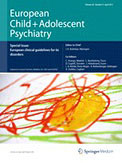Dudova I, Vodicka J, Havlovicova M, Sedlacek Z, Urbanek T, Hrdlicka M. IF: 1.662

Department of Paediatric Psychiatry
Abstract:
The aim of our study was to examine odor detection thresholds and odor identification in autistic subjects. Thirty-five patients with Asperger's syndrome and high functioning autism (mean age 10.8 ± 3.6 years; 31 boys) were compared with 35 healthy control subjects (mean age 10.4 ± 2.4 years; 28 boys). There were no significant differences between groups with regard to mean age (p = 0.598) and gender proportion (p = 0.324). Olfactory testing used the Sniffin' Sticks test (threshold and identification parts only). Participants with Asperger's syndrome and high functioning autism, in comparison with healthy controls, were significantly impaired relative to odor detection thresholds (6.3 ± 3.1 vs. 7.9 ± 2.0; p = 0.025). Autistic participants were significantly better in correctly identifying the odor of an orange (94 vs. 63%; p < 0.05) and significantly worse at correctly identifying the odor of cloves (40 vs. 74%; p < 0.05). With regard to identification of fourteen other substances, there were no significant differences. There was no significant difference between autistic and control subjects on the total score of olfactory identification (p = 0.799). Odoridentification ability (as expressed by this total score) correlated significantly with age in the control group (p = 0.049), but not in the autism group (p = 0.103). We found impaired odor detection and almost normal odor identification in children with autism. Implications for further research are discussed.
-mk-